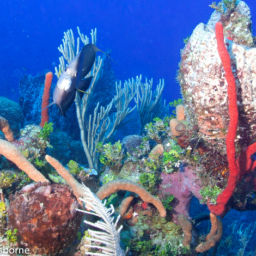On October 5th, during an oceans conference in Valparaíso, Chile, representatives from Cuba and the U.S. announced this new policy, which includes sharing research data and a project to map the marine life in protected areas in the Florida Straits and the Gulf of Mexico. Through this partnership, the countries will compile a shared database of marine species. This marks a breakthrough after 60 years when environmental organizations and marine authorities in the two countries were barred from collaborating.
The new agreement, which is expected to be the first in potentially several of its kind, focuses primarily on the area around the Florida Keys and Guanahacabibes National Park as well as other Cuban protected marine areas. These areas are linked, not only by their geographic proximity, but also by ocean currents. Billy Causey, the National Oceanic and Atmospheric Administration’s marine sanctuaries director for the Southeast Atlantic, Gulf of Mexico and Caribbean region, pointed out several benefits in the new agreement.
“The idea is to take the broad ecosystem approach to try to really capitalize on all the connections we have. Ocean currents clearly connect the United States to Cuba and vice versa. There are threats to corals and fisheries both our countries are experiencing, so we’ll work together over time to address these things.”
Marine protection is nothing new to Cuba, which in the 1990s created an 850-square-mile marine eco-reserve along a 150-mile stretch of islands, known as the Jardines de la Reina, or Gardens of the Queen. This area, largely devoid of human development, has been called “a window to the Caribbean as it looked in Columbus’ time,” and is completely protected from development and commercial fishing. It is home to large numbers of sea turtles, sharks and grouper, as well as some of the Caribbean’s most pristine coral reefs. The area is open to scuba divers, though this is also highly restricted, and only a few hundred divers are allowed in the area per year.
Cuba has a set goal of protecting 25 percent of its near-shore waters as marine reserves, in order to preserve local marine wildlife, mangroves and coral reefs. This will also put Cuba in a position to join a number of other Caribbean island nations known for their scuba diving, and to benefit from the associated tourism.
This new agreement between the two nations could prove a major benefit for the marine environment in the waters around the two nations. It also shows Cuba’s continued commitment to protecting its waters, which are generally less impacted by human development compared to other Caribbean countries.



